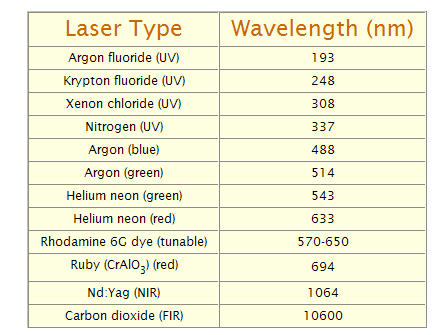The other key to a laser is a pair of mirrors, one at each end of the lasing medium. Photons, with a very specific wavelength and phase, reflect off the mirrors to travel back and forth through the lasing medium. The mirror at one end of the laser is "half-silvered," meaning it reflects some light and lets some light through. The light that makes it through is the laser light.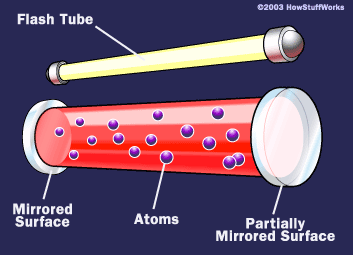 In the process, they stimulate other electrons to make the downward energy jump and can cause the emission of more photons of the same wavelength and phase. 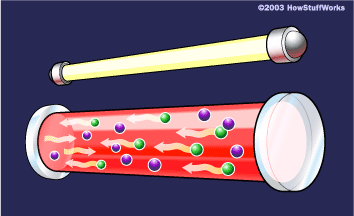 A cascade effect occurs, and soon we have propagated many, many photons of the same wavelength and phase 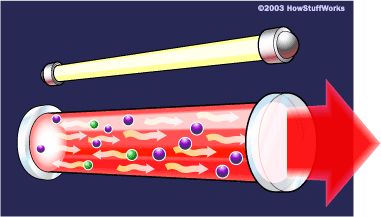 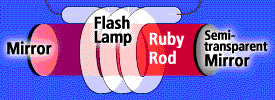 In the non-lasing state the "cavity" (this is the area between the mirrors where the atoms are located) does nothing. When the flash tube fires, it injects photons (light energy) into the cavity which causes the initial excitation of the atoms.
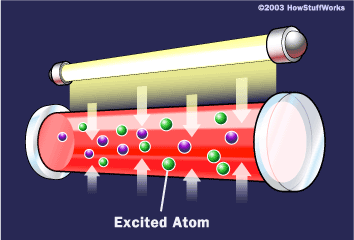 Some of those initially excited atoms emit photons which then stimulate the emission of other atoms as previously described. 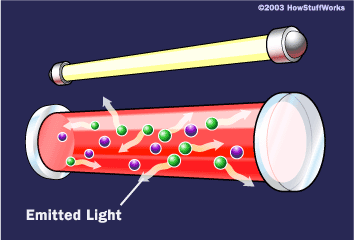
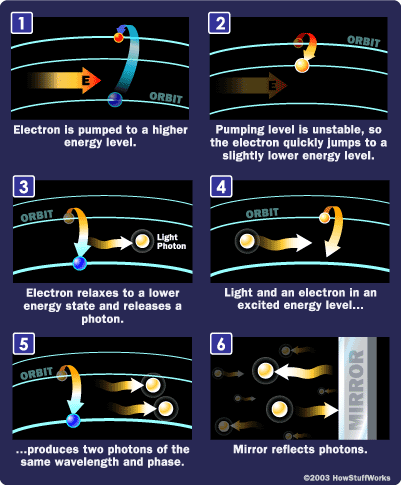
Different Types of Lasers: The laser medium can be a solid, gas, liquid or semiconductor. Lasers are commonly designated by the type of lasing material employed:
The Development of WDM Now that we have developed the laser, how can we use it to transmit lots of information? Clearly, a monochromatic laser can not transmit much information, just power at one wavelength. They key breakthrough here was the development of wavelength-division multiplexing (WDM), the transmission of data over multiple wavelengths. Each wavelength adds a transmission lane to the information superhighway; the more lanes there are, the more traffic -- voice, data, video -- can be carried on a single fiber. Two approaches to WDM:
This works by taking advantage of the fact that different wavelengths in a light pulse travel through optical fiber at slightly different speeds -- red light propagates faster than blue. Each wavelength arrives at the end of a fiber at a slightly different time so that the data can then be encoded sequentially onto the WDM channels using a single data modulator. The key here is that travel times are on the order of a few nanoseconds for each wavelength so you need a modulation source which can do ultrafast switching and that's this is characteristic of a femtosecond laser. These WDM systems are capable of transmission rates of 100 million bits per second through optical fibers and clearly this will be the technology of our new bandwidth. Currently this is still very much in the R&D phase. At the moment, WDM which has now become D (dense) WDM can encode hundreds of channels of different wavelength on a single optical fiber. This is why Comcast can exist to rip off consumers by providing basic telecommunication services. |
